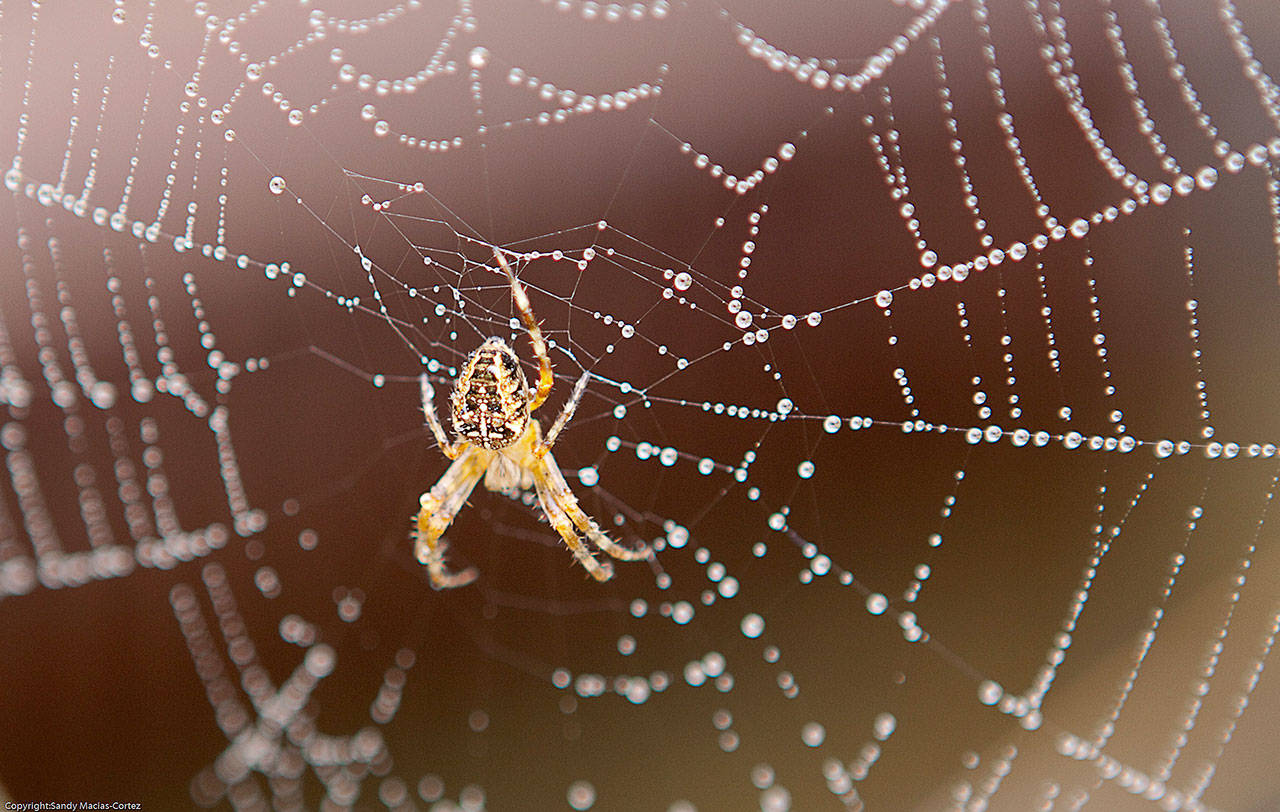Spiders are among the least appreciated creatures that walk this earth. Most gardeners would sooner crush spiders than get to know what value they hold for the garden.
In a paper published in a 2014 article in the “Historical Biology” journal, Oregon State University entomologist George O. Poinar, Jr. described the predation of a 100,000-year-old wasp by a juvenile spider — both creatures sealed in amber just as the spider was about to strike. As the fossil evidence indicates, spiders have had a long time to evolve into adept predators. From the moment they emerge from the egg, spiders are a boon to any yard or garden.
Although they are indiscriminate eaters, their value in keeping insect pest numbers in check far outweighs the occasional pollinator they may snack on.
Of the 949 currently known species of spiders in our state, about 25 of those can be found regularly in our gardens. Their predatory adaptations place these spiders into three broad groups: web weavers, stalkers and ambushers.
Orb weavers are the most visible to gardeners, especially in late summer and early autumn. They spin webs of extraordinary beauty stretching across paths, between blades of grass, and neatly in corners of walls. They remain still in their webs waiting for prey to come to them.
Perhaps knowing where they are makes them the least threatening to most gardeners.
Stalking spiders reside under mulch and in vegetation, emerging only to chase prey or when disturbed by a gardener weeding. Sac spiders and jumping spiders fall into this category. These spiders hunt their prey and chase them down. For the gardener, they are generally harmless.
Sac spiders are more active at night, while jumping spiders are out both day and night.
Funnel weavers, folding-door spiders, and crab spiders are representative of ambush spiders. They blend into the environment and remain motionless until their unsuspecting prey blunders too close to the funnel entrance or folding-door.
Crab spiders, some of which are able to change color, blend in with their surroundings so well they are virtually invisible to their prey. They can often be found lurking in flowers awaiting the arrival of a meal.
Unfounded fears
While insects may have much to fear from spiders, not so much the gardener. It is true that most spiders have venom, which they use to subdue prey. But humans are not prey, and spiders rarely bite people. If spiders can run away, they will. Only when cornered and forced on the defensive will they respond in the only manner they can.
Still, reports of necrotic spider bites abound. In most cases where a spider is blamed, none has been caught and identified. The fact is, any insect bite or open wound has the potential to turn into a serious infection if not attended to.
Frequently, there are underlying medical reasons that are more likely the cause of an infection.
Two spiders that are frequently cited for bites in Washington state are the brown recluse and the hobo spiders. Since there are no brown recluse spiders in Washington, that is one spider no one has to worry about.
On the other hand, the myth of the venomous hobo spider has been harder to dispel. Aside from never actually having been caught in or after the act, biochemical research indicating the hobo spider’s venom is not harmful has prompted the Centers of Disease Control to recently remove the hobo from its list of venomous spiders.
It is also worth noting that in Europe, its native habitat, it is not considered a venomous spider.
There is one spider, however, that should be taken seriously. That is the western black widow. Its bite can cause serious medical issues. However, because black widows are shy, solitary creatures, bites are rare.
The western black widow is common in eastern Washington but is occasionally found in western Washington. The mature female can be identified by the red hourglass marking on the underside of its abdomen. The male does not look like the female and is not considered a health risk to humans.
If you are concerned about spiders while working in your garden, dress accordingly; wear a long-sleeved shirt and gloves. Keep your skin covered to prevent accidental contact with spiders.
Sara Farinelli is a Clallam County volunteer Master Gardener.


